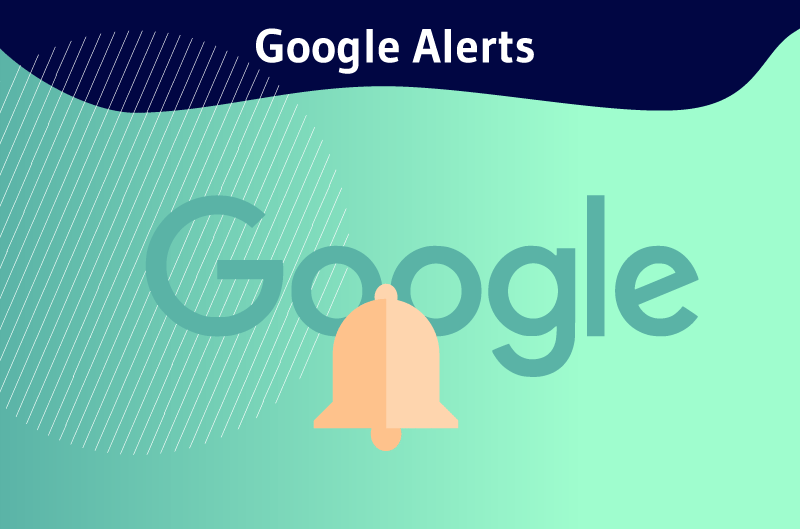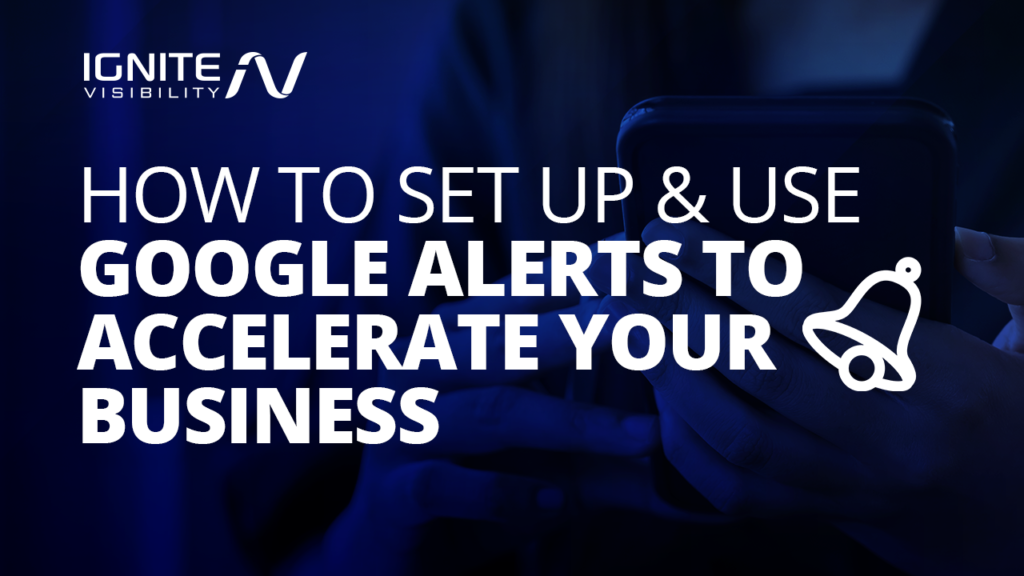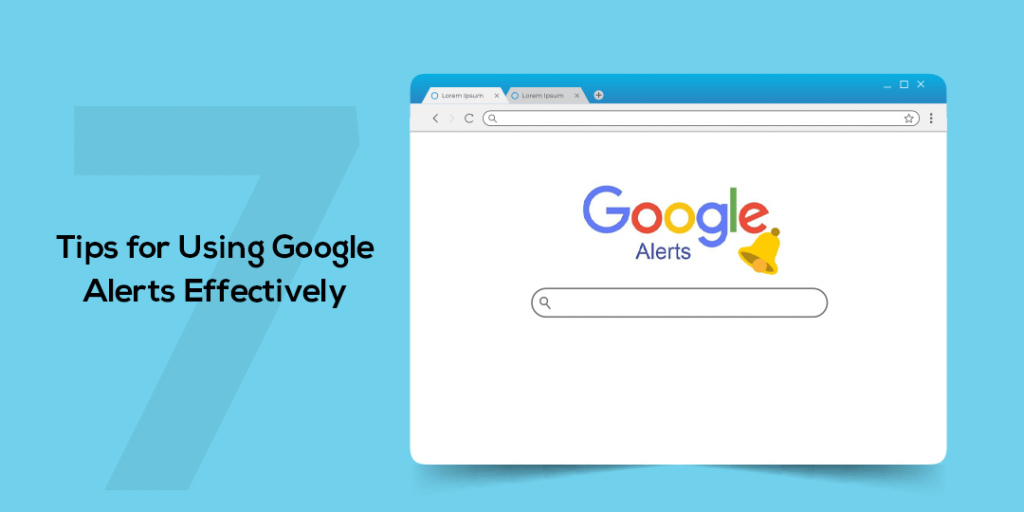Discover the power of real-time notifications with Google Alerts and take control of your online presence like never before.

Image courtesy of via DALL-E 3
Table of Contents
Welcome, young readers! Today, we are going to talk about something exciting called Google Alerts. Have you ever heard of it? If not, don’t worry – we’ll explain everything in simple words. Google Alerts is like having your own superhero that scours the internet and brings you the latest updates on things you care about. Let’s dive in and find out more about this amazing tool!
What Are Google Alerts?
Google Alerts is a special service provided by Google that sends you notifications or updates about anything you’re interested in from the vast world of the internet. Imagine if you wanted to know whenever your favorite sports team won a game, or when a new episode of your favorite TV show was out – Google Alerts is here to make sure you never miss out on these exciting updates!
Why Use Google Alerts?
Using Google Alerts can be super helpful in staying updated on your favorite topics, news, or anything else that catches your interest. It’s like having a magical crystal ball that shows you exactly what you want to see, without you having to search for it every time. Whether it’s keeping up with the latest trends, news, or even your favorite celebrities, Google Alerts makes it all so easy and convenient.
How Google Alerts Work
The Role of the Search Engine
Google Alerts are like little internet helpers that search for specific words or topics you’re interested in. When you tell Google what you want to know about, it scans websites, news articles, and blogs to find the latest information related to those words.
Sending Notifications
Once Google finds something new that matches the words you chose, it sends you an email notification with a link to the website where it found the information. This way, you can quickly see what’s happening without having to search for it yourself!
With Google Alerts, you can always stay updated on the things that matter most to you, all thanks to the hard work of the search engine scouring the internet for the latest updates!
Setting Up Google Alerts
Setting up Google Alerts is easy and fun! Here’s a simple guide on how to create your very own Google Alert:
First, open your web browser and go to the Google Alerts website. Once you’re there, you’ll see a search bar where you can type in the keywords you want to receive alerts for.
Next, choose the type of results you want to get alerts for. You can select from options like news, blogs, videos, discussions, or books. This helps Google know what kind of information you’re looking for.
After that, decide how often you want to receive alerts. You can choose to get them as it happens, once a day, or once a week. Pick the option that works best for you!
Lastly, enter your email address so Google can send the alerts directly to your inbox. Click on the “Create Alert” button, and that’s it! You’re all set to start receiving updates on your favorite topics.
Choosing the Right Keywords
Keywords are like magic words that help Google find the exact information you want. When setting up your Google Alert, think carefully about the keywords you use.
For example, if you’re interested in animals, you can use keywords like “cute puppies” or “funny kittens.” The more specific and relevant your keywords are, the better your alerts will be!
Remember, you can always try different keywords if you’re not getting the alerts you want. Experiment with different terms until you find the perfect ones that match your interests.
Managing Your Alerts
Once you have set up your Google Alerts, it’s essential to know how to manage and customize them for the best results. This section will guide you on updating your alert preferences and deleting unwanted alerts.

Image courtesy of via Google Images
Updating Your Alert Preferences
If you want to change how often you receive alerts or where they come from, you can easily update your alert preferences. Simply log in to your Google account, go to the Google Alerts page, and click on the alert you want to modify. From there, you can adjust the frequency of alerts, change the sources they come from, or even add or remove keywords to make them more relevant to your interests.
Deleting Unwanted Alerts
If you no longer need a specific alert or find that it’s not delivering the information you want, you can delete it effortlessly. On the Google Alerts page, locate the alert you wish to remove, and click on the ‘Delete’ option next to it. Confirm the deletion, and the alert will be removed from your list. This way, you can keep your alerts organized and ensure you only receive updates that matter to you.
Practical Uses of Google Alerts
Google Alerts can be a handy tool for kids to stay informed and up-to-date with their interests. Here are some practical ways you can use Google Alerts in your daily life:
School Projects
When working on school projects or reports, Google Alerts can be a great resource for finding information related to your topic. By setting up alerts for specific keywords, you can receive notifications whenever new relevant articles or research are published online. This can help you gather more information and improve the quality of your school work.
Keeping Up with Hobbies
Whether you’re into sports, video games, or your favorite TV shows, Google Alerts can help you stay updated on the latest news and trends in your hobbies. By setting up alerts for relevant keywords, you can receive notifications whenever there are new developments or updates in your areas of interest. This can help you stay connected to the things you love and never miss out on anything exciting.
Staying Informed About News
Google Alerts can also be handy for keeping up with important news and events. By setting up alerts for specific news topics or current events, you can receive notifications whenever there are new articles or updates on the subjects that matter to you. This can help you stay informed about what’s happening around the world and understand important issues that affect our society.
Google Alerts Advanced Tips
When using Google Alerts, there are some advanced techniques you can employ to refine your alerts and make them even more relevant to your interests. Here are a couple of tips to help you get the most out of this handy tool:

Image courtesy of via Google Images
Using Quotation Marks for Exact Match
One useful trick is to use quotation marks around specific phrases you want to receive alerts for. For example, if you’re interested in getting updates about your favorite book series “Harry Potter,” you can set up an alert with the phrase “Harry Potter” in quotation marks. This way, you’ll only receive notifications when that exact phrase appears online, rather than any mention of the individual words separately.
Excluding Words
Another helpful tip is to exclude certain words from your alerts using the minus sign (-). This can be handy if you want to filter out irrelevant information. For instance, if you’re interested in “apple” as the fruit and not the technology company, you can set up an alert for “apple” and exclude “-technology” to avoid receiving updates related to the company.
Safety Tips for Using Google Alerts
When using Google Alerts or any online service, it’s essential to prioritize your safety and privacy. Here are some important tips to keep in mind while using Google Alerts:
Protecting Personal Information
One crucial safety tip is to never share your personal information, such as your full name, address, phone number, or school name, when setting up Google Alerts or interacting with the internet in general. Remember to keep your information private and only share it with trusted adults.
Being Careful with Links
Another important safety tip is to be cautious when clicking on links that you receive in alert emails. Some links may lead to harmful websites or scams. Make sure to verify the source of the link and only click on those from trusted sources or websites you recognize.
Troubleshooting Common Issues
Not Receiving Alerts

Image courtesy of via Google Images
If you’re not receiving your Google Alerts as expected, don’t worry. There are a few things you can check to troubleshoot this issue. Firstly, ensure that the email address linked to your Google Alerts is correct and active. Sometimes alerts may go to the spam folder, so make sure to check there as well. If everything seems in order, try adjusting the frequency of alerts in your settings. If you’re still facing problems, you can try setting up a new alert to see if that resolves the issue.
Irrelevant Alerts
Are you getting alerts that don’t match what you’re looking for? It’s important to refine your keywords to improve the relevance of the alerts you receive. Think about specific terms or phrases related to your interests that will help Google better understand what you’re looking for. You can also try using quotation marks to search for exact matches, which can filter out unwanted results. If you continue to receive irrelevant alerts, consider excluding certain words using the minus sign to further refine your searches.
Conclusion
In conclusion, Google Alerts is a powerful tool that can help you stay informed about the things you care about on the internet. By setting up alerts with your chosen keywords, you can receive notifications whenever there are new updates related to your interests. This service is especially useful for keeping up-to-date with news, school projects, hobbies, and more.
Recap of Google Alerts
Google Alerts allows you to receive notifications about specific topics or keywords from the vast amount of information available online. It helps you stay informed without having to constantly search for updates manually. By creating personalized alerts, you can tailor the information you receive to your interests and preferences.
Want to turn these SEO insights into real results? Seorocket is an all-in-one AI SEO solution that uses the power of AI to analyze your competition and craft high-ranking content.
Seorocket offers a suite of powerful tools, including a Keyword Researcher to find the most profitable keywords, an AI Writer to generate unique and Google-friendly content, and an Automatic Publisher to schedule and publish your content directly to your website. Plus, you’ll get real-time performance tracking so you can see exactly what’s working and make adjustments as needed.
Stop just reading about SEO – take action with Seorocket and skyrocket your search rankings today. Sign up for a free trial and see the difference Seorocket can make for your website!
Frequently Asked Questions (FAQs)
How Often Will I Get Alerts?
Google Alerts allow you to choose how often you receive updates. You can opt for immediate notifications as soon as new information is available, daily summaries, or weekly round-ups. This way, you can stay up-to-date on your favorite topics without feeling overwhelmed by too many emails.
Can I Set Alerts in Different Languages?
Yes, you can set Google Alerts in different languages based on your preferences. When creating an alert, you have the option to select the language in which you want to receive notifications. This is especially helpful if you’re interested in news or content from foreign sources, or if you’re bilingual and want to track information in multiple languages.







